Welcome to Earth’s premier defense and industrial team!
As a mecha pilot, you’ve proven to have the character, flexibility, and capabilities to serve your fellow citizens in this exciting and challenging career. This handbook offers an overview of what you, as a new mecha pilot, need to know about the history and policies of this worthwhile life of service.
A Brief History of Mecha’s Development
Japan’s mechanical expertise dates back to the 9th century of the Pre-Universal Century (PUC). Japan’s tea-carrying doll stood as the pinnacle, but it couldn’t compare to the European automata, such as the Jaquet-Droz androids. But now Japan stands as one of the leaders in mecha designs. Our mecha have helped defend Earth from alien invasions and stood on the forefront of our prosperous solar system civilization. Japanese mecha remain a cornerstone for Earth’s defense.
Mecha descends from the grand tradition of robotics and cybernetics. The first ideas behind robotics and cybernetics appear in fiction. Japan’s development in these fields traces to PUC1923 with a play called R.U.R by Karel Čapek. This play introduced the word “robot” and, after being translated into Japanese, sparked a new literature genre called “Early Showa Robot Literature.” The genre captured people’s discomfort with the rapid industrialization and mechanization of the period. The machines were seen as threats to life and culture, unlike today’s robotic and mecha servants. The German silent film “Metropolis” also warned about uncontrolled technological changes–similar to the Early Showa Robot Literature. The movie saw wide success in Japan, and it seems to have encouraged Japan’s fascination with robotics (Ambrosetti, 2024). The marine biologist-turned robot designer Makoto Nishimura exhibited the first Japanese humanoid robot called Gakutensoku in the same year as the film. More humanoid robot designs followed, such as Yasutaro Mitsui’s Jinzo Ningen in PUC1932.
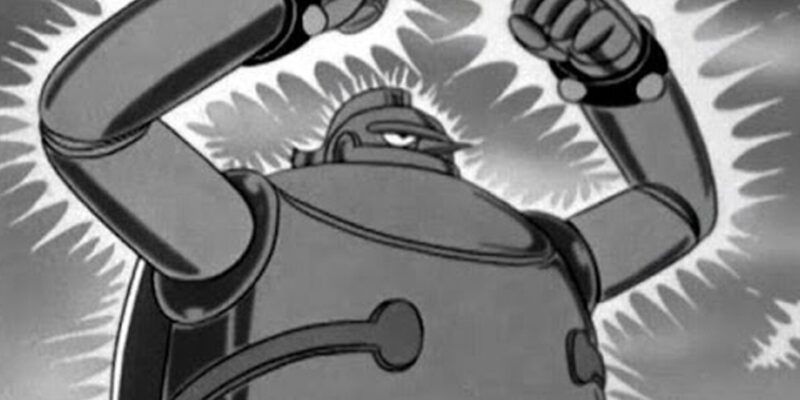
Gajo Sakamoto’s Tank Tankuro appeared in PUC1934 and featured a design with a spherical body. The design could add weapons and morph to fight humanity’s enemy of the time, Kuro Kabuto. This design is among the first robot, or cyborg to be more precise, warrior heroes to appear. Tezuka’s Astro Boy would appear in PUC1952 to help humanity. Mitsutero Yokohama created Tetsujin 28 in PUC1956–or Gigantor as it’s known in the former United States. This design featured a change from automation and toward direct control, a step toward the mecha designs of today. The external pilot would control the giant robot using a remote control. And this change away from automated robotic systems introduced a new ethical problem for mechanization (Ambrosetti, 2024):
So, Tetsujin represents a trivial, value-neutral device, usable for indifferently good or evil purposes, and resembles industrial robots, lacking of Astro Boy’s good feelings.
This dilemma is why you stand among the most ethical, moral, and high-character people in society.

In PUC1969, Mitsuteru Yokoyama developed the giant robot, Muteki Gouriki. But instead of being remote controlled this robot has a cockpit within its head. This is the first mecha as we know it. This design would carry forward. In PUC1972, Eiji Tanaka created Astroganger, and Go Nagai introduced Mazinger Z. Mazinger Z popularized the idea of a pilot controlling the machine from within it. Pilots controlled the mecha from within the head using mechanical and computerized means. Nagai would later develop nanotech control suits with PUC1975’s UFO Robo Gurendaizā.
In PUC1979, Yoshiyuki Tomino and his team designed the standard mecha Mobile Suit Gundam. Inspired by the armor within the novel Starship Troopers, another case of fiction inspiring a technological leap, mobile suits were mass produced using standard alloys. This left them vulnerable to conventional weaponry, but could be repaired and replaced more easily. This set the stage for the commonality of mechanization we enjoy today.
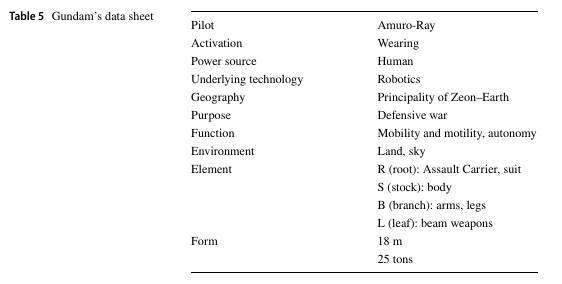
The technology arms race continues with experiments in various ways of building mecha and interfacing with pilots. Neural interfaces allow for more direct control and more agile movements, but at the cost of the pilot’s sanity and well-being. Damage to the mecha are felt by the pilot, depending on the limiters. Couples piloting mecha were also experimented with. Male and female pilots together eased the problems of a direct neurolink, but when the pilots failed to be in sync, performance suffered. The Franxx series remains niche because of this. Mecha designs experimented with other symbiotic designs. Using the alien Corallian as a foundation for a mecha design offered some new potential. The link between the pilot and the Corallian doesn’t have the same strains as a standard neurolink. The Type-Zero was the only Corallian model which required a male and a female pilot. It had an enormous power ceiling and the ability to evolve, but it suffered the same problems as the Franxx designs when the pilots failed to remain in sync with each other. Sometimes, too, the Corallian grew into full sentience. The ethics of using these aliens remains a matter of debate.
Many other models existed, such as the God Sigma and the highly experimental EVA series. The EVA series shares similarities with the later Corallian-based types. The EVA series used human experimentation and cloning technologies along with a direct neural link. Pilots needed to enter the mecha using a plug filled with LCL, a liquid similar to spinal fluid that allowed the pilot to interact directly with the mecha’s nervous system. This neurolink led to psychological unbalance among most pilots. Young teenagers proved the most adaptable to the system, which other studies of different neurolink systems also show. The brains of pilots in puberty are in a malleable state as they work on pruning their dendrites toward the mature adult brain. This allows their brains to prune toward maximum neurolink efficiency. Experiments with young children proved less successful because, while their brains have high-learning capabilities, they aren’t yet in the pruning phase of development. Neurolinks require efficient brain pathways. Adults, because their brains are fully mature, are less adaptable. Adults suffer higher risks of neurolink-related illnesses and death. As a pilot, you’ve been screened and proven to have the mental resilience to pilot mecha safely. The ethics of these teen and children experiments remain debated, but when the survival of humanity and civilization is at stake, such questions need to be relegated to peacetime.
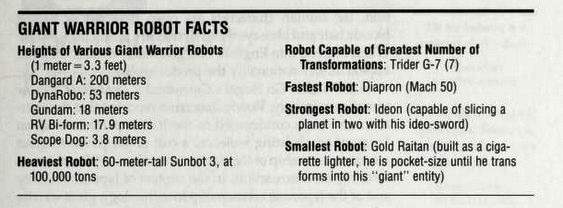
Your Well Being Matters
As a mecha pilot, your primary role is to protect and defend. And your well-being is key to achieving this noble goal. Human pilots remain a critical part of the chain of safety. The case of Kido keisatsu patoreibaa in PUC1989 illustrates the risk of a mecha turning rogue without a high-character person like yourself in control. When the rogue mecha was finally tracked down, no pilot was found within it. This model wasn’t a Corallian or any of the other semi-sentient experiments. The case shows the danger of the mecha evolving beyond their designations. Please report any abnormalities, however small, to your immediate commander. These may signal a similar case. Together, we can prevent mecha from harming our citizens.
Please observe all security policies–see the occupying Security Handbook for a full description of security policies. Criminals often target mecha, even those specialized for heavy-industrial purposes, for nefarious purposes.
Note: never leave your identification key unattended if your assigned mecha still lacks biometric authorization and two-factor authentication. Please refer to the Security Handbook for more details.
The risks involved when your body is enhanced by technology are valid concerns. Please make use of the wellness options made available to you. Monthly mental-health checks are mandatory. Please report any feelings of claustrophobia or sensory deprivation you may experience. This may point to a faulty neurolink. You may also experience the opposite. The enhancement sensors and scanners of your mecha provide your senses may leave you feeling as if are blind, or otherwise reduced in capacity, when not piloting. This is a normal issue of adjustment. But if the symptoms last longer than a few hours, please reach out to your case handler. This may be a sign of a greater health issue. If you experience feelings of dehumanization or feelings of disempowerment when off duty, please reach out to your case handler. These may be signals of a different problem. All mecha pilots are protected from discrimination by the Interplanetary Conference Mechanized Pilot Well-Being Act.
Report any mental health difficulties you experience early. Reporting mental health difficulties will no way impact your performance evaluations, but failure to report any mental health difficulties you have can jeopardize your team and mission. These failures to report will be penalized. Depending on the difficulties you experience, you may be put into an education program to help you readjust to your mecha and responsibilities. This will include rest and recreation time. These programs will vary according to your individual needs. Command cares about your welfare because your welfare is the welfare of the mission. Reeducation will help you become more resilient and a better pilot should you need the support.
Please Note: some mecha models monitor your brainwaves and other biomarkers to help the mecha determine your health. Mecha will report dangerous measurements to Command for your own well-being. But this doesn’t absolve you of the responsibility to report to your case handler.
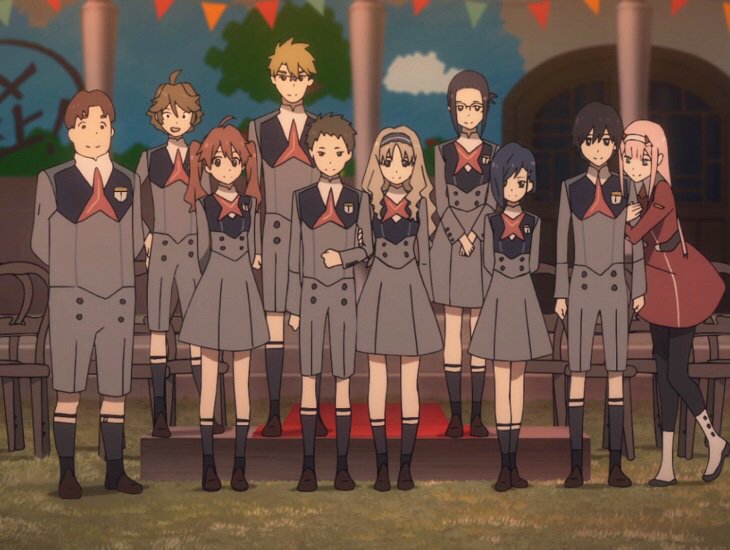
Your assigned doctor will monitor your health and act as your main point of communication. Our doctors have specializations in neurolink sicknesses, and we even have experts in Corallian and Klaxosaur hybrid physiology. No matter what your species, genetics, or personal history, Command values your abilities to contribution to the defense of humanity.
Please Note: pilots with Angel exposure are a part of a special program handled by NERV. Please refer to NERV’s handbooks and policies. They supersede the policies and practices in this handbook.
Navigating Moral and Ethical Difficulties: Your Guiding Light
As a person of proven character and ability, you will be called upon the navigate moral and ethical gray areas when in the field. You are trusted to make the best choices. Your teammates, commander, and case handler are here to guide and support you. But there will be times when you must make a difficult decision. Your mission is paramount, and this may lead to situations where your allies or civilians may become an obstacle to fulfilling the mission. There may be times when you yourself are an obstacle to your team fulfilling the mission. Again, the mission is paramount and a part of the greater defense of humanity. Whenever you face a moral dilemma, keep this as your guiding light.
Mecha pilots before you have faced similar dilemmas in the field. When you face your human enemy, know that they too face similar dilemmas. You can use this to your advantage. Keep them off balance and uncertain.
Support your teammates. Maintain your mecha. Fulfill the mission. All pilots need to know how to perform basic field repairs and maintenance. See your specific design’s Field Repair and Maintenance Manual.
The Nature of Your Enemy

In the defense of Earth, you will face many different enemies. You may encounter Coordinators, rebellious Naturals, Extra-Sol Beings, criminal syndicates, and other threats to Earth. Your mecha and training provide the advantage you will need to defend your family and citizens from these threats.
Please refer to the Understanding Your Enemy Manual and briefing for each particular mission. Briefly:
- Coordinators are genetically modified humans who exhibit faster learning, more physicality, and more immunity to diseases than natural humans.
- Naturals are humans who have not had genetic modifications.
- Extra-Sol Beings come in a diversity of shapes, sentience, and threat levels. A few of the most prominent through Earth’s history are:
- Corallian. These beings feature coral-like characteristics. They provide useful base for mecha technology but also pose a threat with their collective intelligence.
- Angels. These entities posed one of the greatest threats pilots have faced. They appear in a variety of forms, making adaptability paramount for confrontation. EVA units were specifically designed to counter this threat. Report any beings that could be an Angel to Command immediately.
- Klaxosaurs. These entities come in four known categories with differing threat levels. Franxx class mecha units are designed to counter klaxosaurs.
If you encounter entities beyond your mission briefings, report the encounters with Command. Suspected Angels need to be treated with extreme caution.
Maintaining your Mecha
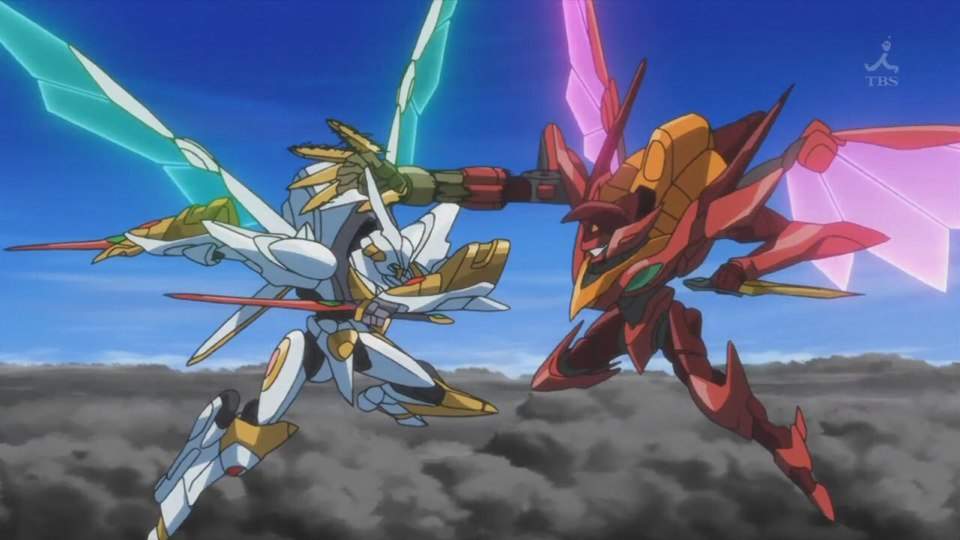
Please refer to your particular model’s field manual for repairs.
Generally, you can shed your mecha’s damaged armor plating. While this may expose a target for your enemy, damaged armor plating can hurt mobility and morphability. Some models have the ability to jettison their limbs should they become infected by viruses–both biological and technological–or become damaged. These limbs can serve as a defense measure. They are designed to explode to aid your escape. This is a last-measure option because of the lowered functioning capacity this creates. Some designs, like Corallian designs, take time to regenerate their organic parts. This isn’t ideal for the mission.
Maintaining your mecha involves maintaining yourself because of the direct link between your mind, body, and the mecha. If you experience extreme emotional disturbance, your mecha will react. Some, like the EVA series, run the risk of Awakening. This reaction can be dangerous for the pilot and all soldiers and citizens around the EVA. Please see your EVA handbook for details. Other designs, like Corallian-based designs, may seek to protect their pilots and take over all control from their pilot. These autonomous modes have been described as a mother defending her young according to pilots who have experienced this. Corallian-based mecha can exceed their operating limits in this mode of being for a time. The mechanisms are still not well understood by our researchers. Some Gundam series, while entirely mechanical and computerized, have shown similar behavior in rare events. While equipped with some artificial intelligence to aid in pilot control, the artificial intelligence isn’t developed enough to exhibit this seeming sentience. More research is being done. Report any such events to Command immediately.
Gundam series are able to use standardized parts from other Gundam designs. If your squad has experienced enough damage and casualties to hurt your operational ability, it is best to consolidate a complete working Gundam from the damaged models and complete the mission. When necessary, you may use the enemy’s compatible hardware, but this runs the risk of enemy viral attacks. Gundams are equipped with anti-virus systems to defend against these attacks, but it is best practice to only resort to these measures when the mission is in jeopardy and resupply is not possible.
Please electronically sign this handbook overview to verify you have read and understood its content. Refer to your other, specific handbooks as directed by your section of Command.
Again, welcome to the first and final defensive line of humanity.
Glory to Mankind!
References
Ambrosetti, N. (2024). Fighting with Rotating Blades, Boomerangs, and Crushing Punches: A History of Mecha from a Robotics Point of View. Foundations of Science, 29(1), 59–85. https://doi-org.oh0164.oplin.org/10.1007/s10699-022-09887-5
Bolton, C. (2002). The Mecha’s Blind Spot: Patlabor 2 and the Phenomenology of Anime. Science Fiction Studies, 29(3), 453–474. https://doi-org.oh0164.oplin.org/10.1525/sfs.29.3.0453
Schodt, Frederik (1988) Inside the robot kingdom : Japan, mechatronics, and the coming robotopia. New York: Kodansha International.
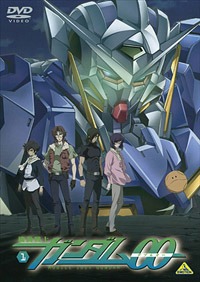

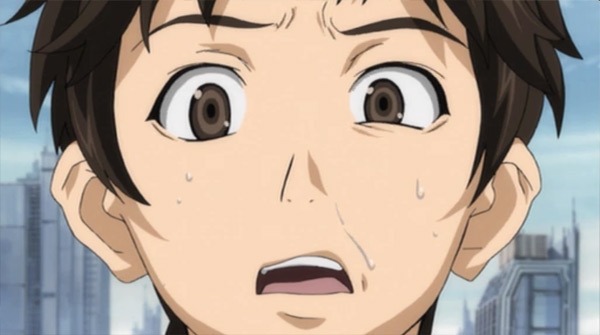



Entirely outside of my area of technical (or literary) expertise. Perhaps you already knew this… but it surprised me. Regarding the last (I guess there’s a new one now) 1:1 scale Gundam in Tokyo’s Odaiba district… the pilot sat in the mecha’s gut… not in its head. As an “American”, it surprised me when I first realized this. But from an East Asian perspective, that’s indeed the location of life’s vital force, or 気.
I glossed over it, but most Gundam designs have the pilot in the torso, the waist and chest. Likely, this is because of the reason you state: that the gut is the seat of the soul. But the designs vary. There are a few with the pilot in the head, and the head/neck has become one of the most common pilot locations for many mecha designs. If I went into all the details, the post would be at least twice as long! Hardcore mecha fans will no doubt skewer me for this article at some point for conflating and mixing all the differing titles as I did. After all, I even referenced Neir Automata!
I had to look up some of what you reference here. Neir Automata seems to touch on the S.E.T.I. perspective that any civilization sufficiently long-lived to be detectable would most likely consist of the technological offspring of some long extinct organic life-form. Ever consider that such a civilization might run a simulation in an attempt to derive their source? 😉
Kind of a universal dream to be able to technologically enhance one’s body. I don’t actually know much about the Gundam mecha. My nephew was interested in the “Gundam Base” store in Odaiba; and that’s where I saw the 1:1 model. They apparently had a more articulating full-scale model in Yokohama, at a special, temporary display on the Yamashita Pier. He said it was pretty cool; but I never saw that one.
Neir Automata is a great story with some deep philosophical questions woven through it. It’s interesting when that simulation begins to build and run simulations of its own isn’t it? 😉
Mecha does a good job exploring how that technical enhancement is turned toward war. We are seeing that with our own new exoskeletons and drones.
Signed and dated!
Ready for duty.
Thank you for the field manual.
* * *
While this is less to do with mecha and more to do with the ethics of robotic sentience/ transhumanism, part of the field manual reminded me of this and so I have to ask. Have you seen the animated limited series Pantheon? Transhumanism and the techno-utopianist conversation is one of my favorites I’ve studied to for years, and I must say that Pantheon, as a story, crafts together the most *comprehensive* set of all of the ethical, social and philosophical issues, above all other stories I’ve ever seen such as Her, Ex Machina, Altered Carbon, Bicentennial Man, probably Ghost in the Shell, Transcendence, Blade Runner/Do Androids Dream (same story right?) and on and on the list goes.
For that reason alone and not for the art style or anything else I could critique, it is a must watch.
I haven’t seen Pantheon yet. It sounds interesting! Recent incarnations of Ghost in the Shell have watered down some of the philosophy and ethical questions in favor of more action. This isn’t terrible on its own. A few seasons of more action and less quoting Nietzsche can be a welcome change. But I do worry about the general simplification of messages over the years, though. Sounds like Pantheon breaks with that trend!
Yes, quite so!
Of course I can’t comment on the philosophical depth of the books, but suffice to say that the show barely felt theoretical it was so story and action driven, yet to anyone who knows the themes being discussed, they hit so many of the super big and important psychological, ontological, socioethical, political, nation state and ultimately, existential philosophy questions.